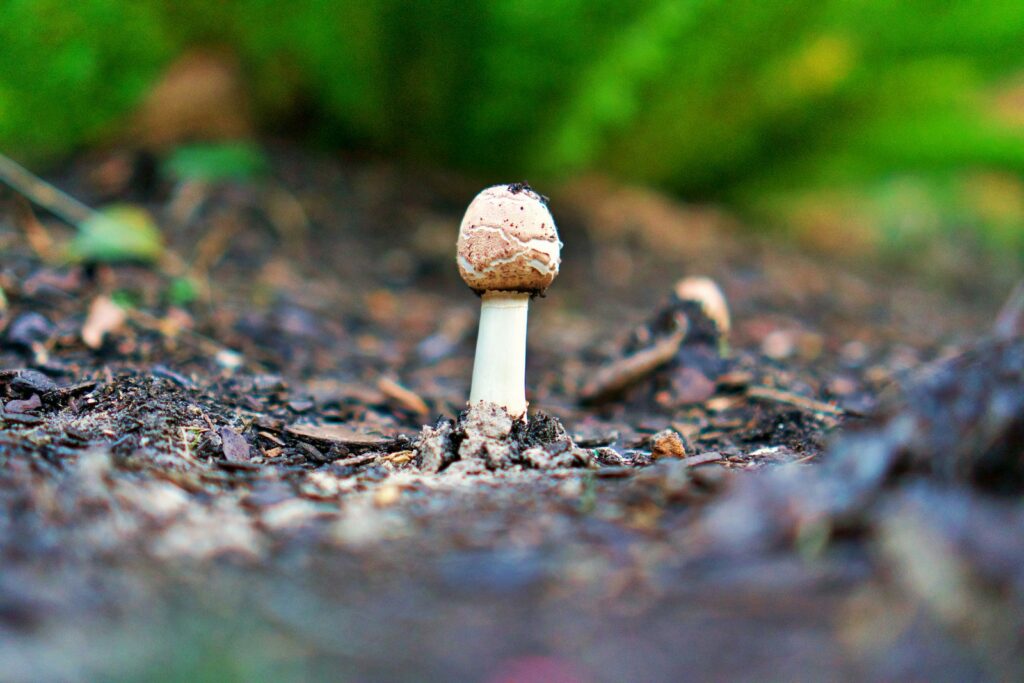Your Resource for Safe Foraging

Mushroom foraging can be a delightful and rewarding hobby, offering both culinary treats and the chance to connect with nature. Texas, with its diverse ecosystems, hosts a variety of wild mushrooms, from the coveted morels and chanterelles to the common but still delightful field mushrooms. Knowing what to look for is crucial because it’s not just about finding mushrooms; it’s about safely enjoying them.
Attempting to identify mushrooms without proper knowledge can be dangerous due to the presence of toxic species. It’s essential to have a trustworthy guide to distinguish between safe-to-eat mushrooms and their potentially harmful lookalikes. A Texas Mushroom Identification Guide is a vital tool for both amateur mycologists and gastronomy enthusiasts. It should feature clear images, descriptions of habitats, and details on physical characteristics such as cap shape, color, and gill formation.
When selecting a mushroom identification guide, it’s critical to look for up-to-date information and regional specificity. Accuracy is paramount, as the slightest misidentification can pose serious health risks. A good guide will also provide tips on ethical foraging practices, ensuring that local ecosystems remain intact and sustainable.
The enjoyment of mushroom hunting comes from the ability to safely explore and utilize the natural resources that Texas has to offer. We ensure the information we provide is as accurate and user-friendly as possible, helping you to forage responsibly and with confidence. Moving forward, we’ll take a closer look at how to choose the best mushroom identification guide tailored to Texas, focusing on the essential features and content that will make your foraging both safe and enjoyable.
Top Texas Mushroom Identification Guides
Our team has scoured the market to bring you a selection of Texas Mushroom Identification Guides that stand out for their accuracy, ease of use, and comprehensive information. Whether you’re a mycology enthusiast or a seasoned forager, our recommended guides are invaluable tools to help you safely and confidently identify the wide variety of mushrooms found across Texas’s diverse ecosystems.
Texas Mushroom Guide

We think this guide is a practical tool for those who already have a basic understanding of mushroom foraging and want to document their finds in Texas.
Pros
- Aid for documenting specific mushroom characteristics
- Contains illustrations for easier identification
- Convenient, portable size
Cons
- Lacks extensive visual aids for identification
- Not comprehensive for beginners
- Cover is potentially misleading
Stepping into the woods with this Mushroom of Texas Identification Record Book feels reassuring for the experienced mushroom enthusiast. Its structured pages prompt users to note vital details of their fungal finds, reinforcing good observation practices. On recent forays, we’ve found that jotting down notes on cap texture, spore color, and stem shape sharpens our identification skills over time.
Encountering a rich variety of Texas fungi is always an adventure, and this book acts as a faithful companion, helping us to catalog our encounters methodically. The inclusion of general information, like the weather conditions and forest type, transforms our notes into valuable data we can refer to later or share with fellow mycologists. The illustrations serve as a basic guide, reinforcing our field decisions on whether a specimen warrants further research.
However, our excursions have revealed shortcomings; the book isn’t a standalone identification guide with extensive images of mushroom species. Beginners keen on picturesque pages brimming with different mushrooms might be disappointed. Moreover, while its title promises a Texas-specific focus, we’ve realized that the book could apply to nearly any region—a fact that might unsettle those seeking exclusive Texas mycological knowledge. So, while we find it valuable as an ancillary logbook, we can’t rely on it solely for identifying the vast mushroom biodiversity in Texas.
In essence, the Mushrooms of Texas Identification Record Book magnifies our awareness as we roam the lush Texas backcountry. It’s an appendix to our larger foraging practice, a place where our scribbles become part of a greater learning journey. We advise pairing it with a more visual and comprehensive field guide, especially for those newer to mushroom hunting. Together, they form a more complete toolkit for the discerning forager.
Texas Mushroom Field Guide

We found this guide to be incredibly handy for anyone venturing into the world of Texas fungi, offering a balance of ease of use and comprehensive coverage.
Pros
- User-friendly layout and presentation
- Comprehensive coverage of Texas-specific species
- High-quality images for accurate identification
Cons
- Some elusive species not included
- Might be pricey for casual enthusiasts
- Scientific terminology can be overwhelming for beginners
In our expeditions across the varied landscapes of Texas, we’ve discovered that, much like the state itself, the variety of native mushrooms is vast and intriguing. This field guide has proven itself to be a reliable companion, especially when trekking through dense forests or exploring the more arid regions. The book’s substantive quality is evident from the get-go, with its clear, high-quality images simplifying the identification process which is crucial when you’re knee-deep in the field.
During our trips, we particularly appreciated the guide’s organization, which allowed us to quickly cross-reference the fungi we encountered with the book’s detailed descriptions. Not being restricted to just scientific names, but also including common names, catered to both our seasoned foragers and those of us who are newer to mycology.
Yet no guide is without its limitations, and we noticed that some particularly rare or newly documented species weren’t listed. While it isn’t an issue often encountered, for those rare magical moments when you do stumble upon an uncommon specimen, it’s somewhat of a letdown. Moreover, though the guide is worth its price for the value it provides, those who forage mushrooms as a pastime rather than a serious hobby might find the cost a bit steep.
For those new to mushroom foraging, or if you’re considering picking it up as a hobby in Texas, prepare to encounter some scientific jargon. Some of us found this aspect to be a bit daunting at first, but with a bit of patience and use, it became second nature. Overall, our team agrees that the Texas Mushroom Field Guide is a valuable tool for both educational and practical purposes when exploring the rich mycological landscape of the Lone Star State.
Mushrooms of the Gulf Coast

We believe this guide is indispensable for anyone interested in exploring the diversity of Gulf Coast mushrooms.
Pros
- Encompasses a vast array of species with over 1,000 entries
- Accompanied by high-quality, color photos aiding identification
- Offers detailed advice on mushroom collection, testing, and cooking
Cons
- Some may find the physical size less convenient for field use
- A single photo per species might not show all variations
- Could be overwhelming for complete beginners due to the information density
Exploring the uncharted specifics of Gulf Coast mycology becomes an adventure with this comprehensive guide in hand. The identification process is significantly eased by the color key and easily distinguishable characteristics of each species explained thoroughly within.
Having used it firsthand, we appreciate the practicality of the authors’ detailed instructions. They extend far beyond simple identification—encompassing collection, cleaning, storage, and finally, how to preserve or cook the mushrooms safely and deliciously.
What’s more impactful is the safety information regarding edibility or toxicity that comes with each mushroom description. This knowledge is critical, especially when out in the wild, differentiating between a delightful meal and a dangerous mistake.
The contributions from a myriad of mushroom enthusiasts have shaped this book into a user-friendly guide that’s as informative as it is engaging. Whether for professional mycologists or hobbyists, this field guide is a treasure trove of knowledge on the regional fungal flora.
Foraging Texas

We believe Foraging Texas is a must-have for anyone interested in exploring Texas’s edible wild foods with clarity and confidence.
Pros
- Abundant full-color photos for easy identification
- Detailed foraging tips and preparation advice
- Region-specific information enriches local knowledge
Cons
- Content might be overwhelming for absolute beginners
- Some may desire more information on avoiding foraged food dangers
- Limited utility outside of Texas
Exploring the natural bounty Texas has to offer has never been easier, thanks to “Foraging Texas” by Falcon Guides. The book’s vivid photographs and insightful descriptions have been instrumental in our recent forays into the wilderness. As amateurs, we found identifying the various edible plants a breeze, something we attribute to the clear, high-quality images spread throughout the guide.
We’ve found the guide’s practical tips on preparation to be invaluable. Whether we’re out camping or considering adding a wild twist to our kitchen recipes, “Foraging Texas” has provided us with sensible and safe advice. Its attentiveness to region-specific plants has allowed us to deepen our understanding and appreciation of our local ecology, making each of our foraging trips both educational and enjoyable.
However, newcomers to foraging should be prepared for the breadth of information presented. While comprehensive, the guide can seem daunting without a basic understanding of foraging or botany. We also realized that a more robust section on the potential hazards of wild foraging would be beneficial, offering a fuller perspective on the practice. Additionally, while the book is an excellent resource within the state, its utility may be limited for those venturing beyond Texas’s borders.
In sum, “Foraging Texas” has proven to be an enlightening companion on our outdoor adventures, providing us with the tools needed to harvest nature’s gifts responsibly and sustainably. It’s both a foundational staple for Texas outdoor enthusiasts and a delightful read that attests to the state’s rich and varied flora.
Mushrooms Guide

We think this guide is essential for anyone interested in the foraging and identification of mushrooms—its usefulness is indisputable.
Pros
- Exceptionally detailed photographs aid in identification
- Informative without being too technical—accessible for beginners
- Durable design with coated pages for outdoor use
Cons
- Not as portable as some pocket-sized alternatives
- Heavy focus on visuals might lack depth for advanced mycologists
- Information on edibility could be more extensive for foraging purposes
Having just spent the weekend thumbing through the vivid pages of our copy of “Mushrooms Guide,” we were quite impressed by the real-life photography. The images made identifying the various fungi we came across on our hike significantly easier. Not needing expert knowledge to decode the details provided by the book was a breath of fresh air, making the experience enjoyable for all skill levels.
Our outdoor trip put the book’s construction to the test—it was reassuring to see how the coated pages effortlessly stood up to a bit of moisture. We didn’t worry too much when our field guide endured a splash or two, which is often unavoidable when you’re out and about in nature.
While the book proved invaluable on our excursions, its size was noticeable; it’s not the most convenient option to lug around on longer trips. Moreover, those with a deep background in mycology might seek more scientific information than what is covered. However, we did appreciate quick references to whether a mushroom was edible, although a more comprehensive guide on this topic would be beneficial for foragers.
In our opinion, “Mushrooms Guide” is a robust source of fungal knowledge that enchants amateurs and pleases experienced mushroom enthusiasts with its beautiful presentations and practical format.
Buying Guide
When choosing mushrooms for identification, there are several features to pay attention to that will assist in proper and safe identification.
Mushroom Parts
Understanding the parts of a mushroom is vital for identification. We focus on these key parts:
- Cap Shape: Look at whether the cap is flat, conical, convex, or has other distinctive shapes.
- Color: Note the color of both the cap and stem as it can vary widely.
- Gills: Observe the color, attachment to the stem, and spacing of the gills.
- Stem Characteristics: Assess the stem’s thickness, length, and any unique features like rings or volva.
- Spore Print: This is the powdery deposit obtained by allowing spores to fall onto a surface. It can be crucial for accurate identification.
Environmental Factors
We consider the environment where the mushroom is growing:
- Habitat: Take note of whether the mushroom is growing on wood, grass, or in soil.
- Geographical Location: Knowing where the mushroom grows can narrow down the species.
- Season: Some mushrooms are seasonal. Identify the time of year the mushroom is found.
Tools for Identification
Here are some tools that will assist us in mushroom identification:
| Tools | Purpose |
|---|---|
| Field Guide | Reference for on-the-spot identification |
| Magnifying Glass | To view small details up close |
| Notebook | To record observations and note environmental conditions |
We should always use these tools to ensure accurate identification. Safe foraging and identification rely on careful attention to detail and a clear understanding of the characteristics of mushrooms in our region.


